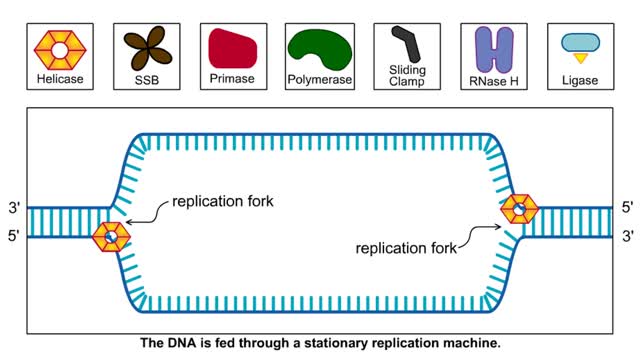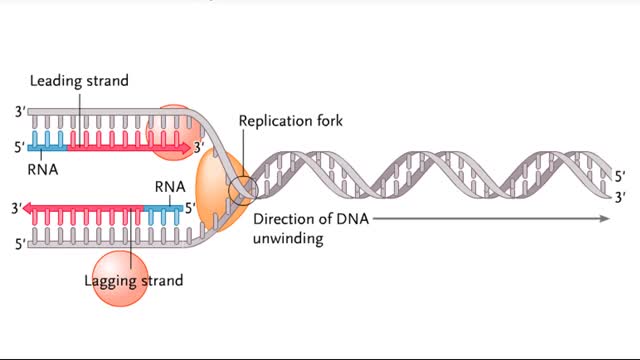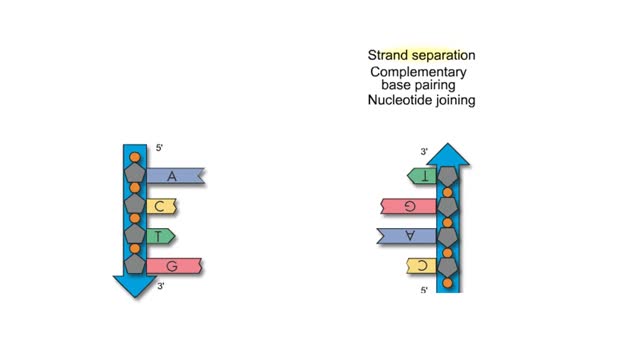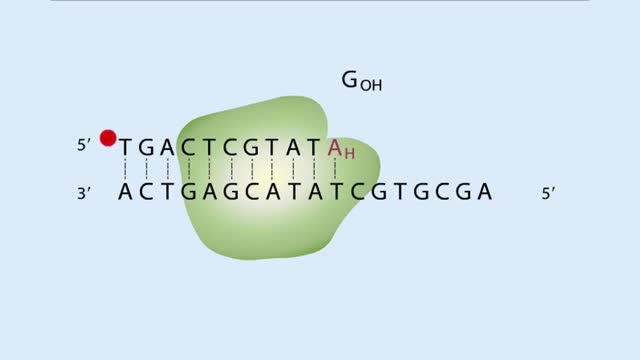New DNA Strand Replication
By: HWC
Date Uploaded: 03/17/2020
Tags: homeworkclinic.com Homework Clinic HWC Polymerase Sliding Clamp Ligase DNA replication SSBs coat Okazaki fragments replication fork
First step: strands are separated • Helicase unwinds the DNA double helix at the replication fork • SSBs coat the single strands to prevent reannealing • Polymerase attaches nucleotide at 3' end • Synthesis is in 5' to 3' direction DNA Polymerase: • Only extends nucleic acid chain • Cannot begin from scratch Solution: • Primase synthesizes RNA primers • Each of the two new strands gets synthesized in the 5' to 3' direction • One new strand is synthesized continuously • The other new strand is synthesized discontinuously • The sliding clamp allows DNA to be processive • Leading strand is synthesized continuously • Lagging strand is synthesized discontinuously • DNA pieces separated by RNA primers in lagging strand are Okazaki fragments Steps of Replication 1. An enzyme, DNA gyrase, separates each side of the double helix. 2. Another enzyme, helicase, unwinds the double helix. 3. Several small proteins temporarily bind to each side and keep the sides separated. 4. An enzyme complex, DNA polymerase, walks down the DNA strands and adds new nucleotides to each strand. The nucleotides pair up: adenine (A) with thymine (T) and guanine (G) with cytosine (C). 5. A subunit of the DNA polymerase proofreads the new DNA. 6. An enzyme, DNA ligase, seals up the fragments into long continuous strands. 7. The new copies automatically wind up again.
Add To
You must login to add videos to your playlists.
Advertisement












Comments
0 Comments total
Sign In to post comments.
No comments have been posted for this video yet.